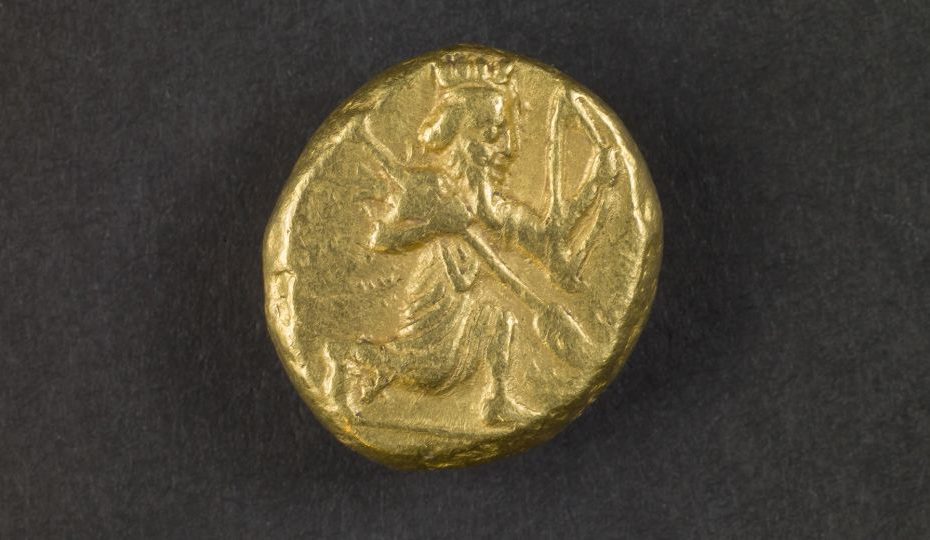Sign up for CNN's Wonder Theory science newsletter. Explore the universe with news about fascinating discoveries, scientific developments and more.
Excavations at an ancient Greek city in western Turkey have unearthed artifacts and archaeological remains dating back to the fifth century BC, including a jar filled with an unknown number of valuable gold coins that had been hidden for more than 2,000 years.
Researchers discovered the treasure in Notion, an 80-acre fortified city inhabited from roughly the sixth century B.C. to the first century A.D. The fortune was found buried — likely intentionally — beneath the floor of a courtyard house dating to the fifth century B.C. and could tell the story of an ancient mercenary in those conflict-ridden times, according to a University of Michigan news release.
“The discovery of such a valuable find during a controlled archaeological excavation is very rare,” said excavation leader Dr. Christopher Ratté, professor of ancient Mediterranean art and archaeology at the University of Michigan and director of the Notion Archaeological Project, in the press release.
“No one ever buries a treasure of coins, especially coins of precious metal, without the intention of retrieving them. So only the greatest misfortune can explain the preservation of such a treasure.”
The site contains typical features of an ancient Greek city, including a theater, temples, mansions, and a marketplace. Notion remained largely untouched and unexplored for thousands of years until about a decade ago when Ratté and a team of researchers began the process of aerial surveys and mapping the visible remains of the city, which turned out to date back to the Hellenistic period (323 BCE to 30 BCE).
But when the researchers began their excavations in 2022, aiming to study the remains that are not visible above ground, they made an exciting discovery: Beneath the foundations of a large courtyard mansion from the Hellenistic period were the remains of an older house with pottery fragments within its walls dating to the fifth century B.C.E., the press release said. The researchers then found the coin hoard buried beneath the floor in the older house.
The objects tell the story of the city's inhabitants, not only during the period between the reign of Alexander the Great and the Roman Empire, but also hundreds of years earlier, when there were great tensions between Greek civilization and the Persian Empire.
Persian darics for a soldier
The newly discovered coins date from the time of the Persian Empire (sixth century BCE to about 330 BCE) and are known as Persian darics, after the kneeling archer on the obverse of the coin depicting the Persian king Darius. Like most ancient coins from the sixth to fourth centuries BCE, this one has no dates on it, posing a challenge for researchers trying to determine when it was produced, said Dr. Peter van Alfen, chief curator at the American Numismatic Society, who was not involved in the excavation.
“There have been several huge hoards of darics found in the past, thousands of coins in total, but these were not found by archaeologists, so the coins were scattered and the context of the hoard was lost forever,” van Alfen said in an email. “The fact that this daric hoard was found in a controlled archaeological dig is rare. … The (archaeological) context of this hoard could provide an absolute dating pin for certain types of darics.”
Over the roughly 200 years the coins were in production, they had slight stylistic changes that researchers have tried to put into chronological order, Ratté said. By discovering coins alongside external dating evidence, scientists can understand how this coin had high intrinsic value for its time.
It’s unclear what exactly the valuable coin was used for — one guess is that it was a way to pay mercenaries, van Alfen said. One gold coin would have been equal to a month’s salary for a mercenary, according to the University of Michigan. Silver coins were more commonly used for everyday expenses, like going to the store. Those were known as Persian silver sigloi, 20 of which would have been equal to one gold coin.
“The fact that this hoard was found in a house suggests that whatever the intended purpose of those who produced darics, in this case they were used as a storehouse of wealth,” van Alfen said. Because of the high value of the gold coin, “it was much more efficient to store wealth in gold coins than in silver,” he added.
As for why the owner never returned to retrieve the gold, Ratté suggested that it could be an indication of Notion's position as a frontier between Greek civilization and the Persian Empire during centuries of conflict. Several scenarios could have led to the coins being abandoned, he suggested, including one in 427 B.C.E. when an Athenian general attacked and massacred a group of mercenaries for Persia.
Such a clash took place at the end of the fifth century BC, when the Spartan fleet defeated the Athenians in a battle and they had to evacuate the city, he added.
It is also possible that the treasure belonged to a wealthy citizen who hoped to one day live like a king, such as “the enormously wealthy Pythius (an ancient Greek architect) who had some 4 million darics in his treasury, as Herodotus relates,” according to van Alfen.
For more CNN news and newsletters, create an account at CNN.com

